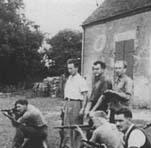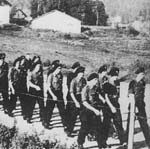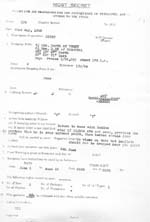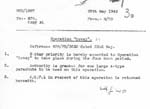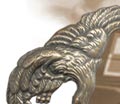 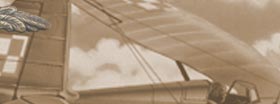  |
|||||||||||||||||||||||||||||||||||||||||||||||||||||||||||||||||||||||||||||||||||||||||||||||||||||||||||||||||||||||||||||||||||||||||||||||||||||||||||||||||||
|
|
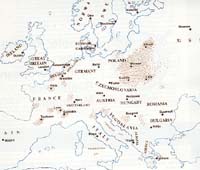
After the fall of France and the evacuation of the BEF (including the Polish 10th Armoured Cavalry Brigade) at Dunkirk, large groups from the Polish Army were left behind and demobilised in camps or escaped into Vichy. Only the Second Foot Rifles (2DSP) covering for the 45 French Corps near the Maginot Line escaped to Switzerland and internment for the rest of the war. Around half a million Poles had immigrated to France during the 1920s and 1930s as economic émigrés to work in the mines in northern France around the city of Lille. In the spring of 1942 the Free French Riflemen and the Partisans-Francs Tireurs et Partisans Francais (FTPF) was set up with a large number of Poles supporting their activities whose politics were seen to be too left wing and fragmented by the head of SOE, General Gubbins. However, this group remained attractive to the strategic plans being drawn up by the SOE in England as a need for a broad front of support by resistance organizations. The military planners required a greater degree of control and cohesion to ensure any secret army would be effective. The Polish Independence Organization’s (PON) key role was to create havoc through subversive activities and later support the invasion of Europe (Operation Overlord). PON recruited heavily from the émigrés and was seen by Churchill as an unusual opportunity to exploit. The Polish Government in Exile was also covertly regrouping remnants of army units (what would have been the 3rd and 4th Polish Infantry Divisions) for direct military contact to harry and destabilize the German occupation of France. SOE benefited through the action and dedication of General Juliusz Kleeberg to muster one of the largest secret armies in France. The unit became known as the Polish Organization for Fighting for Independence (POWN) and later commanded by Colonel Andrzej Zdrojewski. POWN’s prime role was to transfer military personnel to and from Britain and to provide guides and couriers for the conduit of military intelligence. POWN worked independently of the SOE and quite often dropped agents into the same areas of operation completely unknown to MOP (EU/P). SOE recruited heavily from the expatriates too. Known as Operation ‘Monika’ it became a classic victim of politics and war getting mixed up (Foot, 1984; Marks 2000). Monika became one of the EU/P’s headaches as D-Day approached. BackgroundIn the spring 1941 £600,000 had been earmarked as a loan to the Polish Government in Exile for subversive work by Polish Underground Organizations (excluding the USA) and targeted groups in France, Denmark (called INFLEXION-FELICIA) and South America (called SAINTLY-SOLIDAD).Monika and Bardsea were borne in a memo dated 27th June 1941 (PRO HS4/221/98269), which outlined two separate operations in France. Initially called ‘Angelica’ and ‘Adjudicate’ they both had different roles defined in ‘charters’ to ensure there was little overlap in operational areas. Angelica was to focus on pre-war and demobilised Polish troops resident in France and was to focus on: -
Subsequent documents (PRO HS4/221/ 98269) reveal SOE’s dilemma. The exposure and operational risks were different in the occupied and non-occupied French territories. Adjudicate was a contradiction in operational policy to Angelica and the legal status of Polish Army personnel after the collapse of France was considered too since the demobilised men were still classified as Prisoners of War (POW’s). The intelligence briefing also recognised the Polish factions and their psychological make-up would differ between pre-war émigrés and former combatants left behind after the fall of France. For the Germans, there was no difference between these émigrés groups and would treat them all the same. Internal memos indicate various factions were not fully supportive of the operations. Dzierzgowski refused to see agent LIBRACH due to a misunderstanding in differences between Angelica and Adjudicate as he thought them superfluous. A subsequent memo clarifies Angelica was to organise old émigrés based in Northern France in the mining areas around Lille. Polish cadets were not included in Angelica’s charter. However, misunderstanding did arise through interpretation of the documents. Adjudicate’s charter described sabotage and small raids at the direction of the British Authorities implying a role in the future in controlled operations. Memos clearly indicate the personal ambitions of key individuals within MOP (later called EU/P), the SOE and the Polish Government in Exile were causing great friction within these organizations. Agent HUBERT made allegations against the role and formation of Angelica in a memo dated 8th December 1941 where Vice-Premier Mikolajczyk requested that the Adjudicate agent (not named but thought to be LIBRACH) should be withdrawn and sent to N. Africa or Spain. The criticism of the agent indicates direct action was based on a desire to be decorated for bravery while his bravado was likely to cause much damage to the organization and locals within France. In a telegram (undated) to agent BORUTA the changing situation in France postponed the operations where the SOE officers were highly critical of Vice-Premier Mikolajczyk’s role and attitude. Adjudicate was seen more important of the two operations whereas Angelica was described as a ‘nebulous political hedgehog’. As Adjudicate developed its role on the ground, friction reappeared in areas where operations crossed. Activities of Angelica impacted upon the activities of the Office Polonais and the Union of Poles. Operation Angelica would be sacrificed to save Adjudicate as the Vice-Premier Mikolajczyk still objected to certain individual appointments to run the organization and intensely disliked the British Government’s funding which was running at 200,000 Francs per month for an a team of 87 men. Angelica operated on 500,000 Francs per month for a team consisting of 5,000 men. It was reported Mikolajczyk was ‘diametrically opposed’ to Poles fighting in France, however, had no reservations on Poles fighting in Russia, N. Africa or in the Air Force. The Poles had their own intelligence and propaganda unit run by the Ministry of the Interior and known as KOT. A memo dated 6th April 1942 reported the views of agent LIBRACH. He suggested that no Poles would be involved in small actions or sabotage until the invasion of the continent in order to avoid reprisals. The remaining units of the 1st and 2nd Divisions representing 5,000 men resented their treatment by Sikorski as they had been left behind during the evacuation. Their role in remaining in France had heightened and remained crucial in the guarantee of Polish nationhood due to the German annihilation policy and losses in Russian gulags. The memo concluded that Adjudicate was in a perilous state and likely to be ‘blown’ due to the indiscretions of its leader (General Baruta). An agent named, as Lieut. Dzierzgowski would lead Adjudicate with funding switched through SOE with promises of more aircraft drops to pacify critics and Vice-Premier Mikolajczyk. By the end of May 1942 schedules indicate radio sets were dropped (6 in total with only 1 operational in the Toulouse area) with agent HUBERT investigating secure sea routes into Northern France. Included in this mission HUBERT was to report on the distribution of cells, provide details of railways, factories, and other strategic targets for sabotaging. The data below indicates the potential strength in using the Poles. Émigrés Poles
Poles in other centres
Vice-Premier Mikolajczyk still opposed the plans and requested the head of Adjudicate should be French with all recruits transferred to other duties. He would only co-operate with Operation Angelica where the Polish Government issued the orders. Major P. Wilkinson confirmed this in an internal memo to SOE and MOP. Operatives still had concerns over their status with threats of collapsing the organizations and requesting General Kleeberg to instruct all officers to cease activities. Agent LIBRACH and his effectiveness was also questioned in a report by General Klimecki, so SOE threatened to shut down Angelica and cancel the remaining £600,000 credit earmarked for the operation. Although LIBRACH had made an interesting contribution to the SOE, he was criticised for intransigence and dictating policy rather than operating within the charter of Angelica. His ethnic origin was a concern to the British Authorities as they felt being a Polish Jew might cause additional problems if caught. SOE was constantly seeking proof of the effectiveness of the operation to the extent that a contact (named as Savery) in the Foreign Office was asked to cross check. The operation split un-occupied France into 6 areas, 15 districts and 65 posts or cells with these being located in 58 localities. The organization had 300 men with between 1,500 to 2,000 men who could be mobilized. In the occupied zone, it was 1 large northern area divided into 5 districts with areas around Paris, Calvados and Seine et Marne acting as separate areas. 10 couriers and 2 trainers initially assisted in the set-up, training and communication. Agent LIBRACH acted as the chief organizer with agent BARUTA (Chief of the Polish Section) and LESPARRE (Chief of the French Section) were area controllers. Reception committees for airdrops were based in Lyons, Perigeux, Cahors and Clermont Ferrand. Although the cells were scattered all over France, there were clusters around Limoges, Toulouse and Lyons. A ‘Rebecca’ unit was based in or around Limoges. A Rebecca unit was an early directional finding device that assisted in accurately locating drop-zones for supplies. Hudson bombers dropped supplies and a report indicates that a drop on 23 April 1942 at Chateau le Roc near Perigeux took two weeks to clear and hide the stores in the surrounding area. A supply drop in the same area was lost in May 1942. Although officially put down to ‘bad luck’, the post mortem report also indicated poor planning on the ground by LIBRACH where incorrect signalling alerted the local gendarmes. Successive reports indicate the difficulty of operating separate political and military operations in such close geographical and cultural proximity. At one stage there were so many agents in the field that when agents were arrested, internal memos went through different organization of the British (SIS and SOE), French and Polish Governments to clarify whose operative it may have been. For much of 1942 the constant disagreement of the charter of Angelica and Adjudicate remained a political ping-pong ball game between different British departments and Polish organizations. It was agreed that the diversionary role of Adjudicate during the invasion of the continent would be referred to as MONIKA. A memo dated 29th June 1942 by General Gubbins reviewed the whole saga and it indicates that Adjudicate had been cancelled due to the complexity of its charter and the various factions both within the Polish Government in Exile, SOE and the British High Command. For those on the ground, the danger remained. A letter sent on the 7th July 1942 by Vice-Premier Mikolajczyk reported that 7 men had been arrested with head of the cell (Bahyrycz) managing to escape (his name was given orally to MOP headed by Major Hazel) and hoped to cross the Spanish frontier. A young saboteur had been recruited to blow up a power station and told his mother of the operation who then informed the police. The result of the arrests led to police regulations being tightened in both Vichy and German occupation zones. Searches in the Pouzol / Puy de Dome area by Vichy gendarmes concentrated on Poles resident in the area and Permis de Circulation were cancelled to curtail their activities and movements. Designated Activities
Monika continued to operate and whose role would be used to support the Special Forces (Bardsea teams) when the final D-Day preparations and Operation Overlord was activated. Since incidents and activities were so entwined with the Bardsea Operation, much is recounted in elsewhere in this text. A memo dated 19th February 1944 (EUP/PD/5779) confirmed the size and success of setting up Monika. In Lille there were 561 sections containing 5 members in 131 locations (2805 operatives). In Belgium there were 74 sections in 31 localities (370 operatives) and including isolated groups another 3,400 operatives. In Southern France (Vichy) there were 293 sections with 11 members in each based in 125 localities (3200 operatives). When politics between General de Gaulle, SHAEF and the British Government became strained, the SOE and SIS had to remind everyone that 25% of the French partisans were made up of Poles. When the BBC finally announced the invasion and subsequent bridgeheads over ran northern France, many Poles joined the Free French Army to continue the fight. However, the ‘illegal’ recruitment of Poles by the Partisans-Francs Tireurs et Partisans Francais (FTPF) caused huge problems for the invasion forces and the SOE. POWN and Major Chalmers Wright (who had been working under cover for SOE) carried out an investigation over a series of incidents reported in the Seclin, Lens, Noeux-Les-Mines area where the French communists had set up an HQ in a former concealed German blockhouse. Propaganda leaflets accused POWN of holding back their forces, which had created a rift between the French and the Poles in their united fight against Hitler. The exploitation of the political power vacuum had a great impact upon the military planners at SHAEF, the Foreign Office, SIS and SOE while the Free French set up administrative systems in areas of liberated France. Memos indicate the communist party was recruiting and supporting the recruits financially with the level of activity based on strikes spreading from Belgium through France and into Switzerland (at Chandeline, Valais Canton). Stefan Kubacki led the Poles in Lille while in Liege Gorlicki and Gitlin were the key players in recruitment and planning activities. It appears the communist revolt was short lived. The size and success of Monika can be measured by the content of the following memo: Major Ince at Special Forces HQ received a message on 7th September 1944 to send 3,000 uniforms to the Bressiere Barracks in Paris and another 6,000 to be sent to Toulouse and Lyons and 4,000 to Douai. It was one of the largest most secret armies sustained in the field during war whose real role was never exploited to its fullest extent. Operation BardseaOperation Bardsea was designed to use agents drawn from Monika as paratroopers specializing in sabotage and subversive activities in specific operations just behind bridgeheads on D-Day. A memo dated 2nd February 1943 (PRO HS4/229/ 98362) sets out the broad charter for the operation and indicates the Bardsea Operation was strategically subordinate to Monika and whose role was to last 72 hours after invasion or when the positions were overtaken by the invasion forces. 120 French- speaking Poles would be recruited and trained as JEDBURGH parties. Jedburgh’s were 3 man teams trained to be dropped behind enemy lines and supervise local resistance groups, liase with the invasion forces and communicate with London. It was assumed the recruits had already been to ‘A’ schools (airborne training) and S.T.S 51 (Special Training School). Additional airborne and battle training would be given and in most cases training periods were between 4 - 6 weeks. If any candidate had not completed intelligence courses at S.T.S 31, then trainers would be brought in.
The commanding officer was KIJAKOWSKI who oversaw the training of 30 officers and 30 second in command with an additional 30 men trained as w/t operators. Capt. W.H Francis together with Sgts E. Bacon (APTC) and A. Simmons (R.A) were co-opted to assist in the running and training of the men at the depot. As the training progressed, Kijakowski increasingly became concerned with security as trained operatives would be returned to their units, hence discussions developed over an official Polish Independent Company. Internal memos indicate friction between the British High Command/ SOE and the Polish Government in Exile. Klimecki was against the Bardsea operation as the Polish forces had manpower shortages, so it was agreed to train a maximum of 30 groups of 3 men per group on the lines of the Jedburgh’s’. Additional personnel were seconded to the unit to go into the field with the Bardsea teams. The appointment of Capt. J. Pritchard (Royal Sussex) together with Sgts. F. Lyford (RASC) and K. Herod (RA) did not happen without protracted debate. Eventually, SOE won the argument by suggesting their roles were more valuable in the field than back in the UK. In September 1943 Lt.Col. Zdrojewski was dropped into France to link up with Monika as a military liaison officer. For the operatives, life was about intensive commando style training with additional specialist courses. Training was interrupted when they were able to demonstrate their skills and effectiveness to a small party of ‘Top Brass’. In a letter from Brigadier Mockler-Ferryman C.B.E, M.C to General Kukiel congratulating him on the quality of the men who were referred to as the Polish Independent Parachute Company of Grenadiers after a visit to Inchmery House commented on the need for more officers. While the physical condition, training and parade turnout was deemed to be excellent with Second Lieutenant Rossowiecki particularly impressing the senior officers; recommendations for promotion were also being made which indicates the overall quality of the unit and mobility within the ranks. Training exercises in preparation for D-Day rehearsed different aspects of the operation ranging from fully armed parachute drops into the coalfields around The Midlands (Litchfield - called Exercise Gam) through to W/T exercises in the Hampshire countryside. A memo dated 26th November 1943 highlights problems with W/T design and the ability to use existing handheld generators, which were inefficient, short in supply and bulky - just what the agents needed. Subsequently, secret equipment designed and built by the Poles was tested with 100% success rate and there is almost a tinge of jealousy written into an internal memo by a British officer. Training in W/T was with S.T.S 52 based at Golders Green in north London and lasted between 6 - 8 weeks of intensive tuition lasting up to 8 hours per day. Airborne training was at Manchester Ringway and street fighting was practiced with the 11th Armed Division at Limehouse in February 1944. Pay and conditions loomed as an issue since their food ration was lower than counterparts in other Special Forces and pay required clarification too. A memo dated 24th June 1943 indicated Commandos received no extra pay. A Sergeant earned 7s per day and a Private 3s - 4s 9d. However, this did not satisfy the Special Forces units. A memo dated 2nd June 1944 indicated there would be an additional 5s per day tax free for all ranks with family allowances and lodging payments to those who were eligible. All received “danger pay”. While the preparations for D-Day continued, military planners started to look beyond the invasion. In a memo dated 29th February 1944 (PRO/HS4/229/98362) with the reference EUP/PD/5861 indicated General Sosnkowski agreed to expand the Bardsea teams in ‘order to form a cadre of groups to be dropped in Polish prison camps in Germany’. This cadre would be German speaking and whose orders were quite simple: free the prisoners and slaughter the local population. The operation was code named DUNSTABLE and like the Bardsea Operation would become entangled in politics and military strategy, for example SHAEF did not want freed Poles in N. France (often slave labour) to be removed from key industries, which might be important for the war effort. In the run up to D-Day, the role and timing of the operational drops became an area of concern between EU/P, SOE and SHAEF. The plan for the Bardsea teams were to go into N. France after the invasion and be operative in close proximity to the SAS who would be in zones nearer to the beaches in Pas de Calais. The Bardsea’s would operate behind the lines in areas of high concentrations of population around Lille and be ‘active’ for 72 hours with low survival expectancy. SHAEF stipulated the action and general revolt would only be authorised once Operation Overlord could give a clear indication of progress of the invasion troops being in the ‘neighbourhood’. The definition of neighbourhood and status of the Poles in N. France became a major conflict between the Supreme Commander, the Polish Government in Exile and the SOE. The Supreme Commander wished to avoid reprisals upon the civilian population by the Germans by announcing ALL Poles should rise to arms and would be protected/ absorbed into the armed forces. The status of the civilian émigrés and former soldiers had not been thought through and the French Liberation Army had been largely left in the dark over the operation. It was also demanded that all Polish traffic be censored to ensure Overlord would not be blown. The Poles had operated semi-independent encrypted traffic throughout the war and now felt blocked in their ability to manage their operations under their original agreements and charters with the British Government. While the Polish politicians continued to support the operation, the rift (described as intransigence) between the SHAEF and the Polish Commanders, particularly General Sosnkowski, became more acute. General Sosnkowski became more concerned about Poles shedding their blood for France. A memo dated 18th July 1944 clearly indicated the Polish Army was accused of mobilising Polish Divisions and then march east on the ‘lines of the historic old Pilsudski legions’ through Russian held territory. SHAEF saw this as a flash point for a future war between Poland and Russia with unimaginable consequences. Unfortunately, the details of Yalta and Stalin’s plans for Berlin, Germany and the carving up of post-war Europe were not known. All plans were temporarily thrown into turmoil by a Gestapo raid in Paris HQ of Monika capturing 11 operatives in mid July 1944. The memo (referenced EUP/PD/7265) indicated the Germans had attempted to infiltrate Monika and persuade influential Poles to fight the real enemy, communism. It was reported Cardinal Hlond (?) had got in touch with agent BERNARD and this may have been the method the Gestapo had used to pinpoint the Monika HQ in Paris. All W/T traffic was suspended or moved into listening mode and operations in Amiens (CROSSBOW) suspended until Monika agents in the south of France had confirmed all details. A transmission to BERNARD dated 19th July 1944 warned of the dangers posed if the Monika/ Bardsea operation appeared to be anti-communist as General de Gaulle was currently working closely with the French communists. Anything to upset the balance in relationships would cause problems in mobilization of the Monika/ Bardsea teams. By the 25th July, it had been confirmed BERNARD had escaped capture and the Amiens/ CROSSBOW operation to ‘sever cables’ was to go ahead. Major Chalmers Wright volunteered to go back into France into the Lille area with a Jedburgh unit to report on troop movements and report an update on CROSSBOW with the mission approved on the 10th August 1944. The following Bardsea teams were dropped into the field:-
Each group consisted of two commanding officers, W/T operator plus two other ranks that were not listed in the memo. For the British group, a Polish interpreter and W/T operator was added to the ‘cell’ or group. Each man would be dropped into France with a leg bag containing a small personal kit, rations for 2 days and as much small arms ammunition and explosives the bag could carry. Each person was issued with a Marlin or carbine and an automatic pistol. 6 containers would be dropped with each group to be issued to the Polish Resistance Groups (Monika) and these contained:-
17 Sten guns and 5,200 rounds of ammunition The containers for the Bardsea Operators included:-
1 Bren Gun with 1,250 rounds of ammunition As Operation Overlord broke out from the Normandy bridgeheads and with the invasion of Southern France, events were overtaking Operation Bardsea. The Polish 1st Armoured Division had crossed the River Seine at Elbeuf on the 31st August and had reached Ghent by 13th September. Vice-Premier Mikolajczyk wrote to Lord Selborne on 5th September pleading with the British to release the Polish Independent Parachute Brigade and the Bardsea/ Dunstable Special Forces units to be immediately sent with other specialists (Drogi Cichociemni) to support the Warsaw Rising and the Home Army. Memo traffic between SOE and Special Forces HQ (based in Montague Mansions, Montague Street, London) between September and November 1944 indicate half the Bardsea teams had gone into ‘action’ with the residue held in reserve for ‘emergencies’. There is no indication in the PRO archives what activities these were. However, one memo requested German-speaking members of the remaining Bardsea units to be integrated into the Dunstable Operation (Lt Krebs, Sgt Major A Fulek and Pte R Cresla). The memo indicates Bardsea W/T operators Cpl Kupc and Ortyl had volunteered for Dunstable operations were inside Germany as W/T operators in plain clothes trying to establish contact. There were growing concerns over the number of Poles who had been conscripted into the German army and Todt organization. General Kukiel representing the Polish Ministry of National Defence had since December 1943 requested SOE to consider how to encourage desertion once the invasion had started. With approximately 500 Poles based in Denmark, mass desertion would tie up huge numbers of front line troops trying to contain insurrection. SOE / SIS felt there was insufficient resources available for Monika/ Bardsea type operations being set up to rescue these troops. With the start of the Warsaw Rising (hyperlink: Warsaw Rising) the Government in Exile considered using the Bardsea teams to be dropped into the stricken city. However, logistics and the risk were too great. Not even Sosabowski’s Parachute Brigade could be used as they had already been earmarked for Operation Market Garden. The frustration for the Government in Exile and the AK (Home Army) was felt and recorded in numerous memoirs (see Novak, 1984; Jeffery, 1985; Garlinski, 1969 and Iranek-Osmecki, 1954). Churchill and Eden were reluctant to offend Stalin (Foot, 1984) by flying the Bardsea teams into the stricken city. Gubbins fell into despair at the collapse of the Warsaw Rising and the destruction of the city, its inhabitants, the AK and Operation Burza. (hyperlink: Operation Burza) SOE remained keenly interested in Polish affairs, but could provide little assistance during the 63-day campaign. Operation ‘Freston’ was set into motion by Gubbins and led by Marko Hudson to ascertain the damage and morale of the AK. There is no evidence that SOE were aware of the Poles betrayal under the Yalta Agreement. General Sosnkowski remained in opposition to using the Bardsea Special Forces and whom would have been ‘wasted’ if dropped into the Warsaw Rising. Had the Polish military guessed Stalin’s vision of a post war Poland?
AftermathA memo dated 8th September (MUS/1300/1920 confirmed the Monika had been wound up with the Poles being issued an invitation to join General de Gaulle’s Free French Army by General Koenig and this was reported in the London press. Ffr 4m was sent to Colonel Zdrojewski in Paris to cover any further expenses resulting from Operation Monika.There appears to be no official communiqué over the fate of Operation Bardsea or Dunstable apart from an officer concerned with the number of 9mm Browning pistols in circulation. Both Foot (1984) and Marks (2000) describe Monika / Bardsea as a waste. However, SHAEF did not utilize these Special Forces for fear of W/T traffic blowing the cover of Overlord and the possible reprisals by the Germans. There was also an inexplicable sensitivity towards Stalin. With the dawn of post war Europe and the Cold War, did members of Bardsea and Dunstable find new employment infiltrating the puppet Communist Governments of eastern and central Europe? | ||||||||||||||||||||||||||||||||||||||||||||||||||||||||||||||||||||||||||||||||||||||||||||||||||||||||||||||||||||||||||||||||||||||||||||||||||||||||||||||||||
